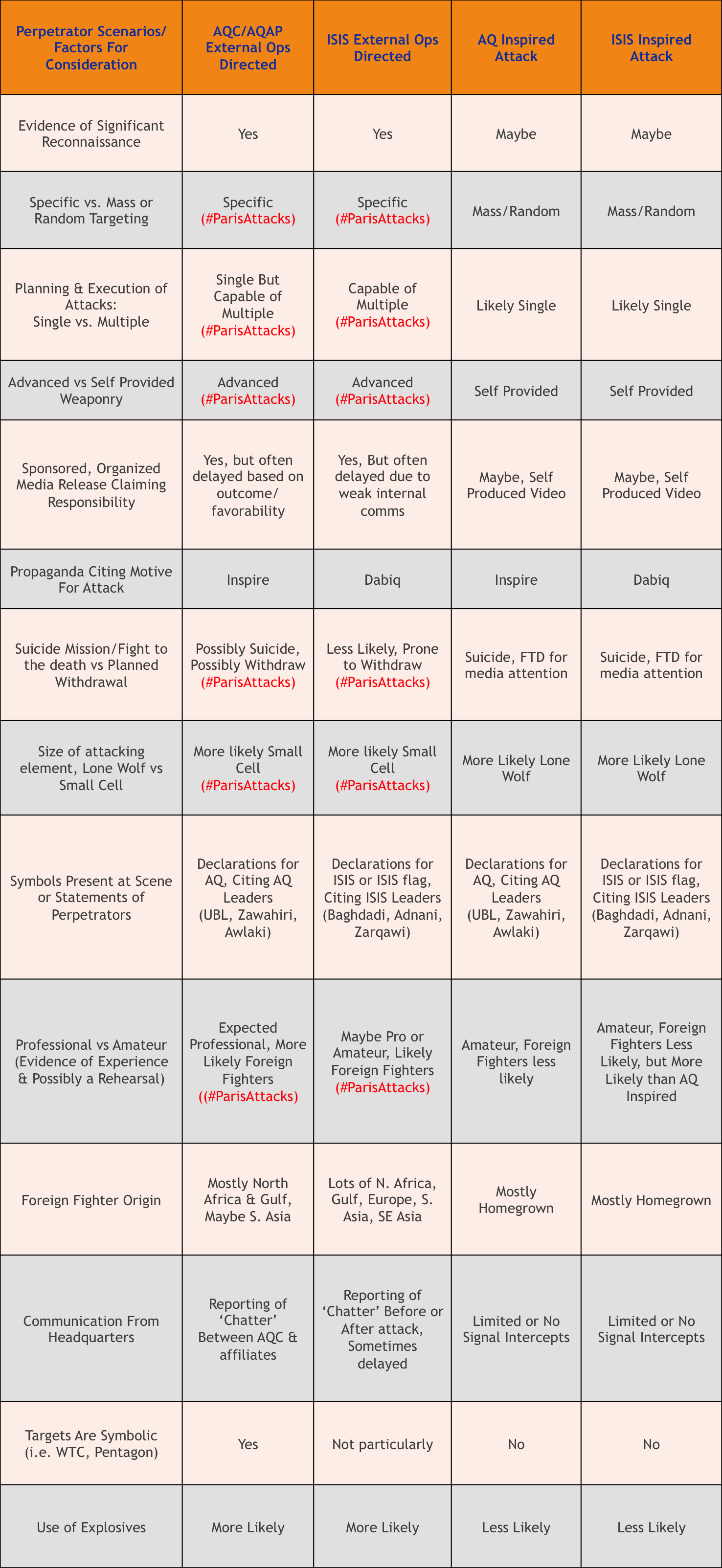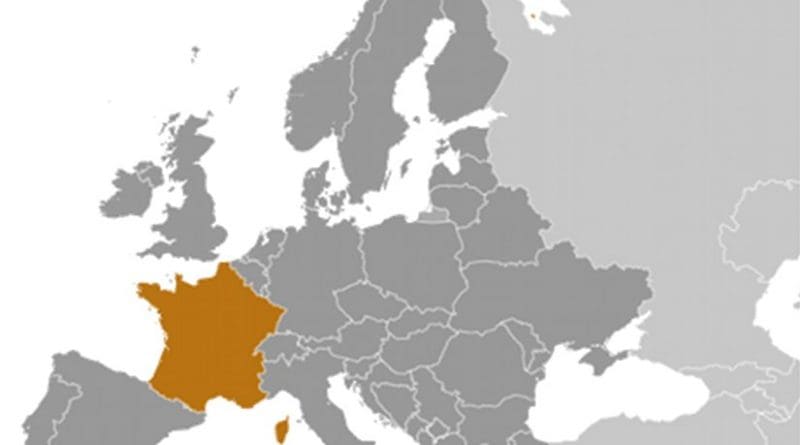Who Conducted The Paris Attacks And Stormed The Bataclan Theater? ISIS? Al Qaeda? – Analysis
By Published by the Foreign Policy Research Institute
By Clint Watts*
Information regarding the Paris Attacks on Friday night November 13th remain limited at this point. While we should remain open to almost any possiblity, this would presumably appear the work of jihadists. I’ve returned to my framework for “Assessing Jihadist Plots In The West” which I created after the Charlie Hebdo attack this past January. I’ve updated my evidence matrix that I utilize for assessing the likelihood of responsibility for different types of plots. I generally look for four different potential perpetrators and scenarios:
- An Al Qaeda Central (AQC) or al Qaeda in the Arabian Peninsula (AQAP) directed plot from Yemen or potentially Pakistan (AQAP is AQC at this point);
- An ISIS directed plot from Syria and Iraq;
- An al Qaeda inspired plot by supporters in the West; or
- An ISIS inspired plot by supporters in the West, of which there have been several in recent months.
There could always be a fifth scenario, a completely unaffiliated different ideological movement that wants to conduct an attack (I call this the Andres Brevik scenario), but I think its not sufficiently likely to warrant analytical effort at this point. ISIS is the likely candidate right now, even based on the limited information that we have as seen in my chart below.
Here are some things I’m looking for right now:
- Planning – This appears to be one of the more well planned attacks. Were there reports of reconnaisance before these attacks?
- Targets Not Symbolic – The restaurant and the theater attacked don’t appear to be particularly symbolic. Al Qaeda directed plots tend to go for spectacular targets, these are not. So I lean ISIS and I wonder, did any of these perpetrators work at these locations or frequent these spots? Is that how they got the idea to hit these locations?
- A Suicide Bombing? And Several Armed Assaults? – This would be a significant advancement. We would be talking about explosives in the country, assault weapons, lots of planning. The French have a serious problem on their hands.
- Weapons Training – Early reports suggest these shooters were calm and calculating. That would suggest weapons training and preparation, leading one to look for former foreign fighters from Syria or other theaters.
- Communications – Al Qaeda did tight control of targeting of attacks with affiliates. I don’t believe this is the case with ISIS. In the case of the ISIS Sinai affiliate, I don’t have any evidence that ISIS Central in Iraq and Syria directed the airline bombing. Instead, I get the feeling the situation is the reverse, an affiliate or some global supporters and former foreign fighters execute an attack and then communicate back to central command (Baghdadi and top aides) what happened. Will we see that in this case, post attack reports of chatter back to Iraq and Syria?
- Media Reporting Is Making ISIS Into ONE BIG THING! – I’ve been really frustrated the past few weeks as news reporting continues to push the theory, without evidence, that ISIS in Iraq and Syria, all affiliates that have pledged to ISIS and all global fanboys of ISIS act in unison under a central command. This was more the case with al Qaeda, but we don’t know this to be true of ISIS. Thus, the public is becoming crazed with fears of an all powerful ISIS which is both untrue and unhelpful.
Below I’ve posted my latest assessment matrix and I’ve noted where there appears to be evidence to support one scenario over another with the marker #ParisAttacks. Here are my notes on this method, known as Analysis of Competing Hypothesis:
When assessing jihadi attacks in the West these days, I look at several factors to begin distinguishing perpetrators, which I’ll discuss here. In government, this might be called a quick and dirty Analysis of Competing Hypotheses (ACH for short). The scenario with the most supporting evidence tends to be the most likely. NOTE: This will evolve throughout the day as more evidence comes in; I have not settled on one perpetrator over the others and I’m still compiling information. Also, a good ACH takes time and the evidence is weighted and assessed for being confirmed or suspected. I don’t have time to do that this morning so am just doing an initial draft here. In a vetted ACH approach, the evidence would be noted as consistent or inconsistent. I’m just posting red #ParisAttacks markers where I’ve heard news reporting that supports that hypothesis.
Here’s my first cut at an ACH chart for this round of Paris Attacks and I’ll be tweeting evidence (@selectedwisdom) that should be included in the chart as the night and next day progresses. 
About the author
*Clint Watts is a Fox Fellow in FPRI’s Program on the Middle East as well as a Senior Fellow with its Program on National Security. He serves the President of Miburo Solutions, Inc. Wartts’ research focuses on analyzing transnational threat groups operating in local environments on a global scale. Before starting Miburo Solutions, he served as a U.S. Army infantry officer, a FBI Special Agent on a Joint Terrorism Task Force, and as the Executive Officer of the Combating Terrorism Center at West Point (CTC). His publications include: al Qaeda’s (Mis) Adventures in the Horn of Africa, Combating Terrorism Center, 2007 (Co-editor, Co-author); “Can the Anbar Strategy Work in Pakistan?” Small Wars Journal, 2007 ; “Beyond Iraq and Afghanistan: What Foreign Fighter Data Reveals About the Future of Terrorism?” Small Wars Journal, 2008; “Foreign Fighters: How are they being recruited?” Small Wars Journal, 2008; “Countering Terrorism from the Second Foreign Fighter Glut,” Small Wars Journal, 2009; and, “Capturing the Potential of Outlier Ideas in the Intelligence Community,” Studies in Intelligence – CIA, 2011.(Co-author). He is also the editor of the SelectedWisdom.com blog.
Source:
This article was published by FPRI

